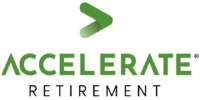When it comes to fiscally frugal health insurance options, health savings accounts (HSAs) aren’t exactly new to the game. They’ve been around since 2003 and have only increased in popularity among employers, politicians and certain types of employees. In recent years, however, the growth in popularity of HSAs is due less to the accounts’ function from a cost-saving benefit plan and more to its utility as a wise choice for investment opportunities.
It’s time to look beyond the traditional approach(es) to planning for the financial future — and look instead toward HSAs as a saving grace for the $369,0001 in health care spending individuals need throughout retirement.
We believe that there’s never been a better time to jump headfirst into a positive change for your employees. Prepare yourself and your business by hearing what we have to say on HSAs.
No Signs of Slowing
HSAs were designed to help people in high-deductible health plans (HDHPs) manage their out of-pocket expenses. Their use has been growing steadily ever since they were introduced to the marketplace. In recent years, as employers are seeking more cost-effective alternatives that enable employees to do more with their health care dollars, they’ve been growing by leaps and bounds and are a prominent feature of today’s employee benefits landscape.
- In only a few years, that growth has shown:
Enrollment in HSA-eligible plans nearly doubled, growing from 10 million to 26 million enrollees from 2013 to 2019.2 - The percentage of employees enrolled in an HDHP packaged with a health reimbursement account (HRA) or HSA – between 2005 and 2021 – grew from 4 percent to 22 percent.3
Any plan to repeal and replace the ACA has included major changes that should greatly expand HSA usefulness and allow the accounts to spread more freely. In short, HSAs aren’t going anywhere and should only become more useful and convenient.
Triple Tax Benefit
What we love about HSAs – probably more than anything else they can do – is their triple tax benefit (available to anyone with qualifying HDHP coverage4 who doesn’t have impermissible coverage5):
- Contributions are tax free
- Contributions can be invested and grow tax free
- Withdrawals aren’t taxed, if used for qualified medical expenses
Good for Employers and Employees
From the employer’s perspective, a robust and effective health and wellness offering that includes an HSA helps to simultaneously attract and retain top talent and keep employees engaged in their work. While many employers offer an HDHP because it’s less expensive than traditional insurance, the addition of an HSA also provides tax savings for an employer.
Neither employee nor employer has to pay payroll taxes on HSA contributions deducted via payroll (as long as they establish a valid Section 125 plan, which can be done very simply). An employer may also take a federal income tax deduction for any contributions it makes into their employees1 HSA accounts.
A Smarter Investment Vehicle
HSAs also have the potential to be just as advantageous as 401(k) accounts or Roth IRAs for investments, in general, thanks to their tax trifecta efficiency.
The HSA is owned solely by the employee, can accept both employer and employee contributions, and is transferrable to any custodian the employee chooses regardless of employment status.
The balance can grow and carry from year to year and can also be invested. In fact, if implemented early in an employee’s career and, especially if contributed to by an employer, an appropriately invested HSA can potentially build a healthy nest egg that will help with health care costs in retirement.
While HSAs certainly aren’t a replacement for qualified, employer-sponsored retirement plans like 401(k)s and 403(b)s, they can certainly act as a force multiplier for retirement planning purposes when properly combined with a qualified retirement plan.
HSAs also offer employees flexibility with long-term care (LTC) insurance, as their funds may be used to pay a portion of an employee’s LTC insurance premiums.
Those funds, up to the limits illustrated below, come out of the HSA tax-free:
| Attained Age During Taxable Year | 2022 LTC Insurance Premium Maximum |
| 40 or under | $450 |
| 41-50 | $850 |
| 51-60 | $1,690 |
| 61-70 | $4,510 |
| 71+ | $5,640 |
https://www.efile.com/long-term-care-insurance-deduction/
Preparing for a Better Tomorrow
Connect with Accelerate Retirement to learn communication strategies, investment opportunities and about the beneficial backbone HSAs have to offer for employees and employers alike. Let’s work together to build a brighter future we can all afford.
1 “Rising Cost of Healthcare is Hurting HSAs” Saxon Blog. https://gosaxon.com/2020/02/04/cost-of-healthcare-hurting-hsas/
2 2019 Midyear HSA Market Statistics & Trends Executive Summary. August 2019. Devenir Research. https://www.devenir.com/wp-content/uploads/2019-Midyear-Devenir-HSA-Research-Report-Executive-Summary.pdf
3 2021 Employer Health Benefits Annual Survey. The Kaiser Family Foundation and Health Research & Educational Trust. https://www.kff.org/report-section/ehbs-2021-section-8-high-deductible-health-plans-with-savings-option/
4 https://www.healthcare.gov/glossary/high-deductible-health-plan/
5 https://www.irs.gov/pub/irs-drop/rr-04-45.pdf
ACR#4021425 12/21








